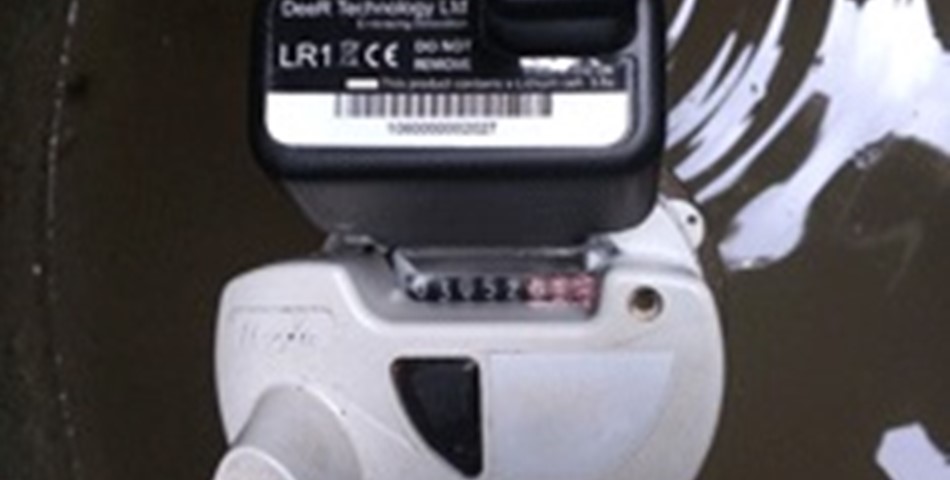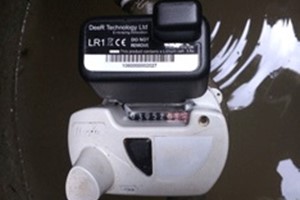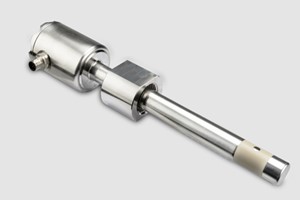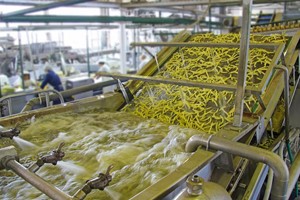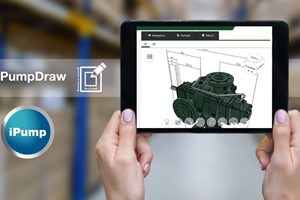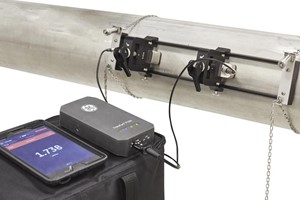Welsh-based engineering and technology innovators DeeR Technology have developed a new game-changing meter reading device which aims to deliver substantial savings and efficiencies for the water industry and its customers. In addition, the UK manufactured invention will enable commercial utility companies to better deliver on their sustainable water management policies.
A team of experienced and award-winning entrepreneurs are behind the development of the LimpetReader technology, an optical meter reading device that provides a more cost-effective meter reading solution than traditional Automated Meter Readers (AMR).
The device and its accompanying software system address the challenges that commercial water utilities are facing on two key fronts set by the government regulator OFWAT – improving on water leakage targets and providing accurate data collection for regular billing.
The business benefits of the LimpetReader include rapid installation; requires no wiring or interruption of supply; avoids inaccurate or estimated billing and regulatory fines; adoption even in the most inaccessible locations; can be retrofitted to avoid the costly ripping out of old units; reduces time and resources required for meter reading; improves health and safety due to local and remote reading capability and contributes to a water sustainability program.
Major water retailers including Wave and Castle Water, have completed field trials, with installations on-going in several locations across the country. End customers with large water consuming sites including Burton & Derby NHS, Gloucester NHS, BMW and Sunderland City Council have also successfully concluded trials.
The LimpetReader establishes a new standard for water meter reading services. Its sealed housing contains micro cameras which take photographic images which are then converted into digital readings and delivered via a secure data connection to the end user. The device, together with associated products, removes the need for human interaction to collect the data. The LimpetReader simplifies how commercial water meters are read at less than half the price of traditional automated reading solutions on the market.
Designed and developed by DeeR Technology founders Hugh Mort, who has 25 years of experience in industrial systems engineering and Dr Garry Jackson, an electronics engineering, product design and wireless communications expert. Additional technical and product development input has been provided by Dr. Gwyn Brooks, co-founder of global success story Sandvik/Osprey the market leader in the manufacture of highly alloyed products and metal injection moulding and entrepreneur and businessman Ian Brown. Both Brooks and Brown have been awarded MBEs for their services to Industry. Combined, the four experienced industrial entrepreneurs have based this start-up in Port Talbot, Wales, where the LimpetReader is produced.
DeeR Technology’s Brooks, chairman of the business, comments: “Water companies, end users and other key stakeholders have worked closely with us in delivering this unique device that provides a solution to a problem the water industry has been crying out for. There has been a tremendous amount of investment in gas and electricity with SMART metering, but not in the commercial water industry, until now. I believe the LimpetReader will play an important role in helping the industry to deliver on its promises to a more efficient and sustainable water cycle. “
Smart Water Meters Market
Recent smart water meter market forecasts are rosy
Several recently published research reports have been uniformly upbeat about the forecasted growth of the smart water meter market. With smart metering in the electricity and gas sectors approaching maturity, smart water meters are now expected to be the growth drivers in the smart meter market.
ABI Research, for example, predicts that double-digit growth in the smart meter market will lead to 1.2 billion connections by 2022, driven primarily by the installation of smart water meters. Although North America currently has the largest install base of smart water meters, by 2018 Europe will have that distinction.
Global Market Insights expects the smart water metering market to be worth $14 billion by 2024, with 290 million new units installed during the forecast period. About 17% (50 million) of those installations will be within the context of AMI smart water management solutions.
Transparency Market Research forecasts that the water meter segment will grow from a value of $3.5 billion in 2015 to $5.2 billion by the end of 2024, driven primarily by smart water meters that leverage cutting edge ultrasonic and electromagnetic technologies.
Driver 1: Technology Advances
Advances in ultrasonic and other volumetric measuring technologies are making smart water meters more precise and more reliable than ever before. But, as important as they are, smart water meters operate within holistic smart water management solutions – solutions that are being empowered by an entire range of technology advances from next-generation networks like LPWA (Low Power Wide Area) networks; to IoT machine-to-machine interfaces; to big data analytics and more.
Driver 2: Government Regulations and Investments
Population growth accelerated urbanization and climate change are all significant stress factors on long-term water sustainability. With access to clean drinking water a basic human right, governments at all levels (national, state, municipal) set and enforce standards for water utilities. Mandated adoption of smart water meters and smart water management solutions is becoming the norm in both developed and emerging economies.
Governments are also investing in — or encouraging investment in — the infrastructures that are essential for impactful smart meter deployments. Thus, for example, the 2009 American Recovery and Reinvestment Act created the $4 billion Clean Water State Revolving Fund for projects that will repair the nation’s clean water infrastructure. And in 2012, the Chinese Ministry of Industry and Information Technology unveiled the 12th Five-Year Plan focusing on the development of intelligent grids, household, and cities, including an investment of $294 billion in water resource projects.
Driver 3: Operational Optimization
Smart water meters and the data that they generate provide actionable insights for water utilities about how they can optimize their water distribution operations, improve billing and consumer engagement, and reduce NRW.
But water utilities are not the only big players using smart water meters to optimize water usage. Industry accounts for 20% of water consumption worldwide. Industrial plants are also driving the adoption of smart water meters as part of their strategic goal to reduce water usage. They are not only enhancing profit margins by reducing costs, but they are also strengthening their corporate citizenship profiles. The commercial smart water metering market share is expected to grow by more than 15% by 2024.
The world’s water experts are in agreement that smart water meters save thousands of liters of water a year and that they are essential in communities that are suffering from water shortages. All economic indicators show that as long as the cost of the meters and installation continue to be more affordable, the sales of meters will continue to rise until at least 2030.



